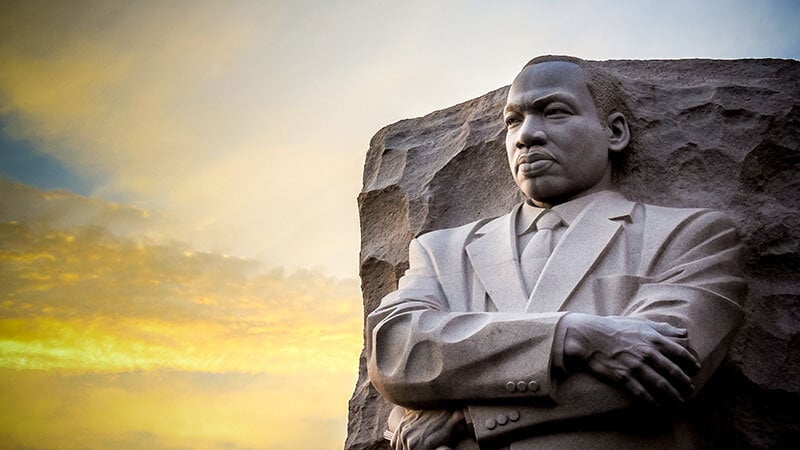Where is Martin Luther King, Jr. Buried? And Other Prominent Black Figures’ Final Resting Places
February is Black History Month. This is a time to honor Black leaders and icons who furthered the rights of African Americans in the face of adversity. If you would like to pay your respects to these influential figures, or learn where their ashes were scattered, these are a few of their final resting places.
Martin Luther King, Jr. – Ebenezer Baptist Church
There are many prominent Black figures to honor during Black History Month, but one of the most well-known is Martin Luther King, Jr. As a minister, activist, and leader of the civil rights movement, he is often considered the face of Black History Month. His image and quotes are among the most the most popular, circulating through the news and social media all month long, and beyond.
Martin Luther King, Jr. is buried beside Ebenezer Baptist Church in Atlanta, GA., along with his wife Coretta Scott King, who passed away in 2006. You can learn more about the life and legacy of Martin Luther King, Jr. by visiting the Martin Luther King, Jr. National Historical Park also located in Atlanta, which includes tours of his birth home.

Malcolm X – Ferncliff Cemetery
As another revolutionary Black icon, Malcolm X advocated for Black power and the promotion of Islam within the Black community. He was a prolific and gifted orator. In 1963, the New York Times reported that he was the one of the most sought after speakers in the United States. Because of what many considered radical ideas, he was also targeted by many groups. After his assassination in 1965, he was buried in Ferncliff Cemetery and Mausoleum in Westchester County, New York.
Maya Angelou – Ashes Scattered on Storm King Mountain
Maya Angelou was a writer, poet, activist, and the first Black woman to be featured on the American quarter. Writing over 36 books, one of her most beloved works includes I Know Why the Caged Bird Sings, which would go on to be written into many high school and college curriculum. In 1993, she became the first African American and woman asked to read a poem at a presidential inauguration. After passing away in 2014, she was cremated and her ashes were scattered at Storm King Mountain, just off the Hudson River in New York.

Harriet Tubman – Fort Hill Cemetery
During the Civil War, Harriet Tubman made 13 trips back and forth from the north and south and led more than seventy slaves to freedom. And even after she performed these monumental accomplishments in the name of equality, she continued to do more for the movement. She founded a home for aged African Americans as well as an infirmary. Her grave site is in Fort Hill Cemetery in Auburn, New York, where people often leave behind things like compasses and stickers (“Tubman is my Homegirl”) to honor the revolutionary woman.
“February is a time to honor Black leaders and icons who furthered the rights of African Americans in the face of adversity.”
Shirley Chisholm – Forest Lawn Cemetery
Shirley Chisholm was a first in many things. The educator and author was the first Black woman elected to Congress, as well as the first Black candidate to run for a major party nomination for President of the United States. She was also the first woman to run for the Democratic Party nomination. After retiring from Congress, she taught politics and sociology at Mount Holyoke College in Massachusetts. When she passed away in 2015, she was buried in Forest Lawn Cemetery in Buffalo, New York, next to her husband.
Muhammad Ali – Cave Hill Cemetery
“…floats like a butterfly, stings like a bee”. Muhammad Ali was a boxer, an activist, and a linguist. He passionately and eloquently voiced his opinion and proved that athletes could be more than just entertainers. Despite his death in 2016, his impact on Black culture is still felt to this day. Born in Louisville, KY, that’s also where his final resting place is, in Cave Hill Cemetery.

Frederick Douglass – Mt. Hope Cemetery
Douglass led the abolitionist movement in Massachusetts and New York, wrote three autobiographies, supported women’s suffrage, and also held many offices. He was the first African American nominated for Vice President of the United States. His final resting spot is in Mt. Hope Cemetery in Rochester, New York, in Section T Plot 26. In this New York cemetery, he and his fellow suffragist, Susan B. Anthony, have the most visited burial sites.
